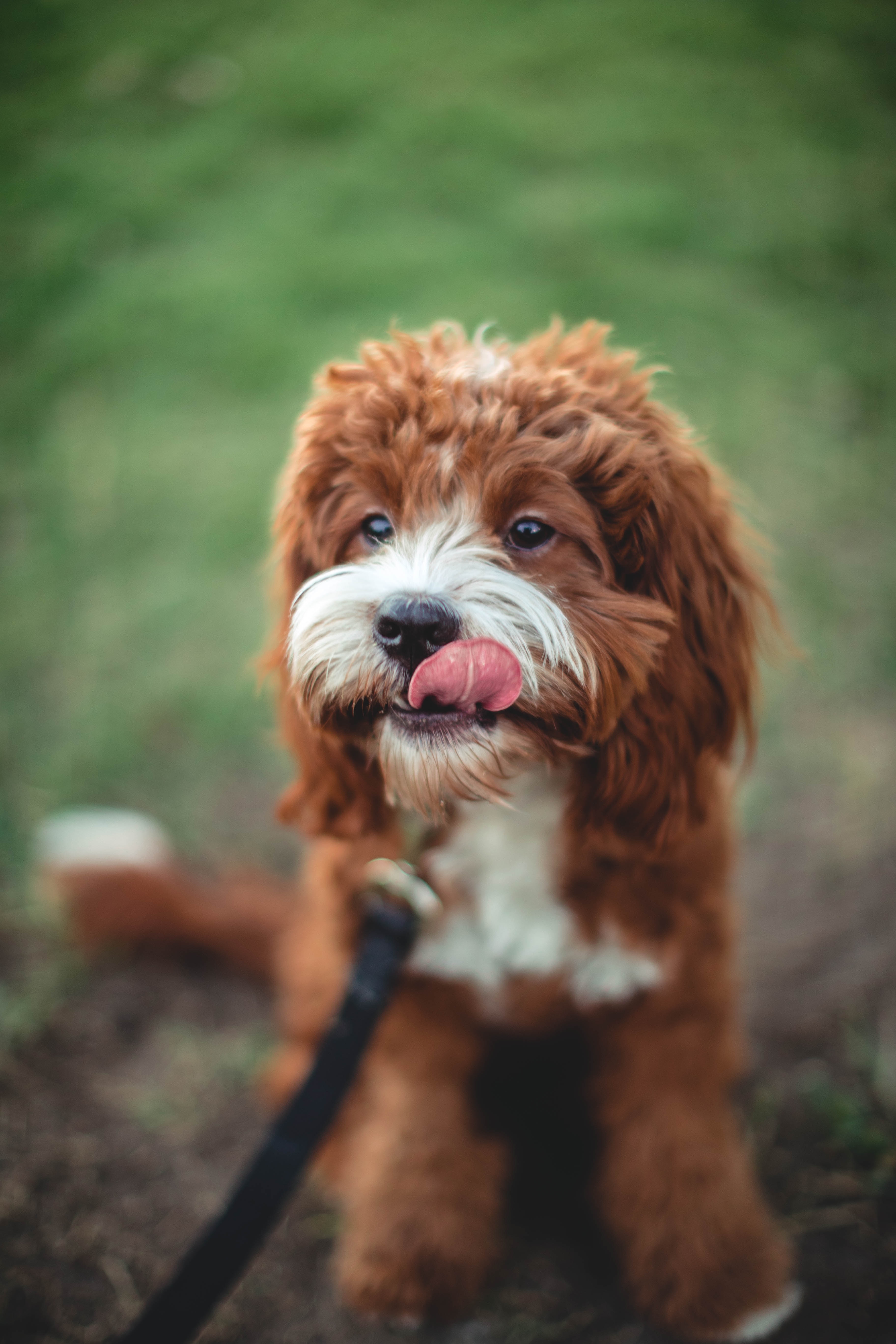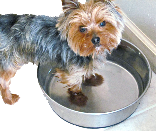Your Small Dogs
Sense of Taste
You would think that dogs sense of taste is equal to his amazing olfactory abilities, but in reality, your sense of taste out performs his.
Just like us, the dog’s sense of taste depends on his taste buds found on the surface of the tongue, roof of the mouth and in the very back of the mouth.
The more taste buds a person or animal has, the better his sense of taste. Humans have on average about 9000 taste buds compared to the dog that has only 1700.

Dogs Sense of Taste--It's all in the Taste Buds
Humans, as you will recall have four basic types of taste buds: sweet, salty, sour, and bitter. Salt is a very sharp taste sensation in humans. We love salty things. Dog’s, though have taste receptors that search out meats and fats.
This difference has everything to do with our ancestors. We are omnivores, eating a rich diet of meats, grains, vegetables, and fruits. The carbohydrates in our diet—fruits, grains, and vegetables are not very salty.
People will reach out for salt to compensate for this because our bodies need the right amount of salt to function properly.
Dogs, on the other hand, were carnivores in the wild before they became our pets. Meat was their primary food, which meant that more than 80 percent of their diet consisted of animal parts, with stomach contents adding carbohydrates to their diet.
Meat has a high sodium (salt) content, so they did not crave or seek out salt.
Wild dogs also supplemented their diet with fruits, which have a sweet taste. They developed a sweet taste bud during this part of their evolution and it continues to this day. Dogs sense of taste for sweet is share with other species including humans.
Dogs hate bitter tastes and avoid them whenever possible. Most people crave the bitter tastes or at least enjoy some of the foods considered bitter such as coffees and teas and many of our green vegetables.
Manufacturers use this rationale by making compounds such as Bitter Apple®, used on furniture or other objects to deter puppies from chewing.
Dogs Sense of Taste: Check Out the Water
Dogs Sense of Taste also differs from ours in another important way. Dogs seem to have taste buds for water found on the tips of their tongues. Most Humans cannot taste water, but dogs can. This ability likely has an evolutionary components.
In the wild, dogs ate meat which has a substantial salt content. To stay hydrated, a dog would need to consume plenty of water. This ability to taste water may have encourage the wild dog to drink more.
People can taste water to some extent and will be able to differentiate between a high quality bottled water to poor tap water. We don't have as many taste buds so our ability in this area is limited.
Like Mama (Dog) Like Baby (Dog)
Another interesting phenomenon, according to Stanley Coren, in How Dogs Think, is that the dog’s food preferences may be learned very early in life. What the mother eats while pregnant and what filters through the mother’s milk may influence later taste preferences. Coren calls this, “the doggy equivalent of comfort foods.”
Just a speculation but dogs sense of taste may be similar to people in this regard. I noticed that this phenomenon may also be present in human children.
My biological son has very similar tastes as us, but his two adopted siblings prefer a totally different set of foods. All were raised in the same household and offered the same foods. Genetics may play a part, but I tend to think that a mother’s diet while pregnant plays a role also.

About Janice (author and voice behind this site)
Having lived with dogs and cats most of her life, Janice served as a veterinary technician for ten years in Maryland and twelve years as a Shih Tzu dog breeder in Ohio.
Her education includes undergraduate degrees in Psychology with a minor in biology, Early Childhood Education, and Nursing, and a master's in Mental Health Counseling.
She is a lifelong learner, a dog lover, and passionate about the welfare of animals. Her favorite breed for over 50 years has been the Shih Tzu, but she has also lived with Poodles, Maltese, Yorkshire Terriers, Beagles, English Bulldogs, Carin Terriers, and a Cocker Spaniel.
When not writing, reading, and researching dog-related topics, she likes to spend time with her eight Shih Tzu dogs, husband, and family, as well as knitting and crocheting. She is also the voice behind Miracle Shih Tzu and Smart-Knit-Crocheting
Does This Article Deserve Your Thumbs Up?
We always appreciate your support and encouragement. Your thumbs up means so much to us. Please like this article.
If you find this page or any page on Small Dog Place Helpful, or useful in anyway, I'd love it if you would click the small heart found on the bottom right of each page.
You can also share or bookmark this page -- just click on the:

Free Monthly Newsletter
Sign Up for Our Free Newsletter and get our Free Gift to You.
my E-book, The Top 10 Mistakes People Make When Choosing a Dog (and how to avoid them)



